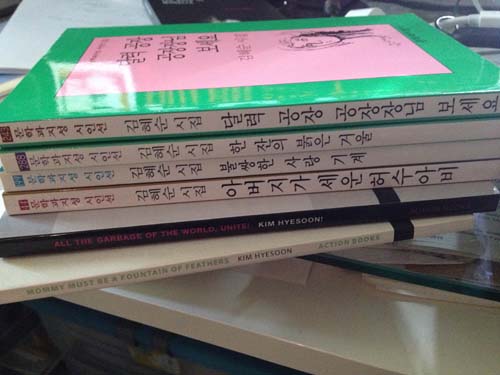Lucas de Lima’s Wet Land
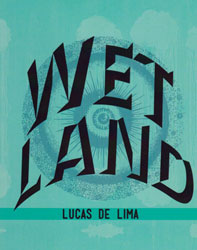 Wet Land
Wet Land
by Lucas de Lima
Action Books, March 2014
108 pages / $12-16 Buy from Action Books or SPD
The premise of Wet Land is almost impossibly weird: it’s a book-length response to the death of Lucas de Lima’s close friend Ana Maria, who was killed by an alligator. Written mostly in all-caps, the poems are delivered by a narrator who frequently takes the form of a bird, ruminating on Ana Maria, the gator, and the act of writing itself. Early on in the collection, de Lima describes the act of watching a televised reenactment of Ana Maria’s death: “IN THE NATIONAL GEOGRAPHIC DOCUMENTARY THE ACTRESS LOOKS/NOTHING LIKE ANA MARIA;/THE OTHER ACTRESS LOOKS NOTHING LIKE HER FRIEND.” Here, de Lima sets the tone for many of the tensions that characterize this collection. It’s easy to criticize this kind of tasteless reenactment—to see it as a byproduct of a violent, media-obsessed culture. But in Wet Land, de Lima turns the lens on himself, exploring his own anxiety about being complicit in the reappropriation of tragedy.
June 23rd, 2014 / 10:00 am
In the Moremarrow / En la masmédula by Oliverio Girondo
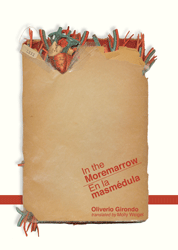 In the Moremarrow / En la masmédula
In the Moremarrow / En la masmédula
by Oliverio Girondo, translated by Molly Weigel
Action Books, 2013
93 pages / $16 Buy from Action Books or SPD
the mix
yes
the mix I stuck my bridges together with
That first line is beautiful & on one level it seems a sort of how-I-wrote-my-book-and-so-can-you! treatise by Girondo. They are the last 4 lines of In the Moremarrow‘s first poem, The Mix
A dovetail is a joint formed by two pieces whose respective notches are made one for the other, in alternating fashion, so they conveniently fit. Here, the dovetails are undone, & instead we have for example soulmortar, an unlikely union of the ethereal intangible but vital, with the crushed inert material. Which, in creation myths, sounds like the soul blown into dust to animate a person. Perhaps, then, this is not so foreign. It is more primordial marrow. The mix seems to refer, then, to this poetics of uniting the disjointed, of mending broken ligaments, & the “bridges” are the compound words themselves, the neologistic portmanteaus
It is hard to say what stubborn female couplings refers to. Maybe something about the male poet accepting his anima, that female part of him that is stubbornly there but his machismo stubbornly rejects. This is a reach, as psychoanalysis is a reach. The “ex-she” seems to support it, & the several later poems’ repeated references to the ego seem to support it, & the erotics of “the mix” seem to support it, but it still feels like conjecture
Every left page gives the original Spanish version of the poem, and the right page holds the translation. I notice the Spanish helps. The original version of that first line is two
la pura impura mezcla que me merma los machimbres el almamasa tensa las tercas
hembras tuercas
English grammar now is largely gender-neutral, and Spanish grammar isn’t. Every noun & adjective in this sentence is female (ending in -a or -as) except for two. On a macro level we at least can say that “female couplings” refers to the writing itself. The writing is self-referential. The universe of En la masmédula writes its own rules & thereby writes itself into existence. Perhaps this explains its lack of proper nouns; on one level, it has no need to tie itself to the World as we know it, it needn’t be referential, it loves itself into being, it is self-reverential. It ties itself to the Word. It hermetically seals itself
But on another level, no. It hermaphroditically seals itself
Because it rewrites itself by correcting the mistakes of our World. The mistakes of our World embed themselves inside the grammar that we use, those stubborn couplings that lead us towards fixed fragmentations, binary perspectives, formal & social discriminations. Therefore the recombinations in this book are all still legible, because they adhere to grammar rules but comment on them while deforming them. “alma” for example means soul. It is one of those strange nouns with a feminine ending (alma), but is nevertheless considered a masculine noun, hence the male article “el.” Combining “alma” with the feminine noun “masa,” however, creates a Word of indeterminate gender, but the “el” still precedes it. This seems a problematization. “masa,” in fact, means flour, it is the baseline substance for sweet sumptuous cakes, for savory bread of the Earth, etc.
“machimbres” isn’t a word. It reminds of the word “machismo,” a word English has imported, & of the word “chimba” which can mean the opposite bank of a river, or a pigtail, or a piece of meat, etc. It also sounds like “machihembrado,” a dovetail joint, hence Weigel’s translation choice. It seems again though that this dovetail has been pared down, to remind us of all its assemblage, & question gender once again. To undo the dovetails, quite literally. A beautiful translation choice. It bridges shores. The shores Girondo sticks his bridges with
Translation is hard.
*
solicroak
prefugues
sighspirits
selfsoundings
inlabyrinth
ex-she’s
soulmortar
*
A lot of poems end on their own titles, creating a feeling of being in an enclosure. This is a bizarre feeling, because the poems are intensely lyrical without being confessional or “sincere” or narrative in the way the Lyric I often attempts to be; instead it is like handling a ball of pure psychic energy. The poem entitled “You have to look for it” has three stanzas, each of which ends on “for the poem,” which inscribes itself within the title’s “it.” The first line of the poem goes
In the eropsychis full of guests then meanders of waiting absence
Which is, like, incredible. But once again, very gestural. It once again informs the readers of the poem’s motive & the poem’s dimensions. It is a meeting place, a delimited house, a hovel of guests, entering the poet’s eroticized ego; it couples. There are other people there, straying, erranding
January 31st, 2014 / 10:00 am
The Parapornographic Manifesto by Carl-Michael Edenborg
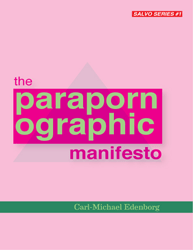 The Parapornographic Manifesto
The Parapornographic Manifesto
by Carl-Michael Edenborg
Action Books, 2013
38 pages / $8 Buy from Action Books or SPD
Author’s Note: This is a failed review. I think by definition you can’t really write a review of a manifesto. If you read a review of The Communist Manifesto or The Surrealist Manifesto how would it go? “A little dry, kind of pedantic, I wish there were more pictures?” Here Edenborg lays out some ground rules for a new category of pornography that, by the end of the work, aims to be a new critical and theoretical lens. Like other manifestos I think you can reject it, adopt it, or stand somewhere, critically, in the middle.
***
Commence regular review:
The Parapornographic Manifesto from Carl-Michael Edenborg is the first Salvo from Action Books, in I assume, a series of chapbook size manifestos or mini-treatises on theoretical or critical concerns. Over the course of the book Edenborg outlines some history of pornography and proposes the parapornographic as a thing that is not post- or anti- but some other more complicated, unclear, way of understanding the genre.
As far as Google is concerned, most of the discussion of Parapornography takes place at Montevidayo, which makes sense, since it is on Action Books, and bears something of a resemblance to the poetics as it were, of that website. The parapornographic of Edenborg exemplifies a kind of post-post-modernity, as far as I can tell. Where the goal/intention/desire isn’t rooted in furthering or transcending history, but a Deleuzean? Deleuzional? kind of entanglement – and alternative to teleological progression.
Frankly, I think it’s essential to ask about a concept like Parapornography whether it is necessary, essential, or most importantly, useful to understanding what it describes. Edenborg writes that while anti-pornography and post-pornography, and even, pornography pornography, can be parapornography; they don’t always make they cut:
“The Antipornographic-pornographic complex can be seen in itself a parapornographic phenomenon, filled with frightening pleasures.
The producers, distributors, and consumers of pornography and its critics – including the pornographic material in itself and the more or less violent, legal or extra-parliamentary attacks on it – form a machine that multiplies and turns bodies inside out. Only talking about the instrumentalization and objectification of people is not going far enough in the reflection: parapornography is strictly discursive and presupposes that the All arises as a bug in the game of emptinesses.”
Every Being is divided into a variety of instruments and objects in this game, her sides are finely ground and placed in four-dimensional machines that have a peculiarly autonomous function. Parapornography affirms this, by converting objectification into multiple fetishization.”
Edenborg outlines these features of what he called “the parapornographic technology”:
The infinity of revealing
The exploded affection theory
The critical will to power
The violent pollution
Protesology and displacement
I’ve been working on this review for weeks – and I’ve read the book several times, along with just about every single mention of it on the internet – and I still have no idea what “protesology” is. I can take a crack at “exploded affection theory” but that too isn’t defined in any way in the work or in any external place that I can find – and I assume to explode a theory of affection you’d have to have one first. Is protesology the –ology of protes, Swedish for prosthesis? I just don’t know.
Edenborg claims that, “The Nietzschean superman can be said to be the protagonist of the majority of all of pornography, both through his erect penis and his master’s gaze.” Parapornography must depart from the Nietzschean ubermensch. Edenborg says that one of the first parapornographic works comes by way of Guillaume Appolinaire in Les Onze Milles Verges in 1907. Apollinaire apparently edited a publishing house that published erotic literature – and Edenborg sees Les Onze Milles Verges as a kind of deconstruction / reconstitution of the pornographic – “pornography is ridiculed and affirmed in the same prismatizing motion.”
To answer the question I asked earlier, that parapornography is useful, and perhaps essential. I do not know whether it is our salvation, as Edenborg grandly puts it at the end of the Manifesto. I think that it can offer some important insights:
“To those who try to sell or protect a religious delusion such as the idea of ‘nudity,’ parapornography pushes its own revival: the insight in the limitlessness of unclothing, in non-Euclidean anatomy, in the darkness of excitement. That law creates desire means loneliness. The fact that those things that prevent desires also create our desires means loneliness. Consuming pornography or exciting oneself with antipornography means loneliness.”
“Against these solipsisms, parapornography proposes the absence of self.”
This proposition is not so different from the intention of some spiritual orders and some poetry – think of Emerson’s invisible eye-ball for a minute and you’ve got both covered. Of course, parapornography seems to come at ‘self-less-ness’ in a distinctly different way.
***
Leif Haven lives and writes in Oakland.
November 25th, 2013 / 12:00 pm
MOUTH OF HELL: Infernal Visions at the Edge of Consciousness
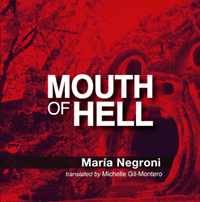 Mouth of Hell
Mouth of Hell
by María Negroni
Translated by Michelle Gil-Montero
Action Books, April 2013
112 pages / $16 Buy from Action Books or SPD
“So dark and deep and nebulous it was,
try as I might to force my sight below,
I could not see the shape of anything.” –– Dante, Inferno, Canto IV
“Then existence was a must, and I remain unborn. I’ve traveled with ghosts, or worse, drudged through discontent, destroying what I desired, which didn’t exist. Awkward to thrive as humanity atrophies, only to shelter in a garden of stones. And yet, in all that dismal jubilance, something sings: the soul, a tiny light that sounds among great monsters, growing always more equal to itself, thirstier for white words.” –– María Negroni, Mouth of Hell
***
Mouth of Hell is inspired by Manuel Mujica-Lainez’s Bomarzo, a novel I’ve never read, which itself is based on the eccentric Duke Pier Francesco Orsini, a 16th century nobleman who commissioned a sacred garden of monsters to be built in his honor. Negroni’s Mouth of Hell is composed of brief untitled prose poems, the proclamations of the decadent aesthete Orsini at the exact point of his death, which occurs inside the garden’s hellish grotto. These poems act as jolts of energy and are the culmination of a peculiar life as seen from the edge of consciousness.
Jorge Monteleone’s superb introduction and the translator’s preface do excellent service to shed some light on the historical Duke Orsini as well as the novel Bomarzo. This convergence of sources and voices sort of mirrors the fragmentation and reconstitution of selfhood that occurs in these poems, all happening in the heightened reality of the monstrous sculpture garden, “my biography and my park of monsters, who I’ve despised, envied, admired, and loved, deep down, terribly.” Speaking of the park’s sculptures, Orsini said, “Each rock represented an enchanted figure, in my memory or imagination.” Each poem in Mouth of Hell could do the same, creating a fascinating interplay of life, art, creation, dissolution, and rejuvenation of the senses.
“A lot could be said of my hideout. It is here where I ruminate and write, where I wield my inhuman right to dissent. Deep in the light, I draw my self-portrait: the high signs of a fearsome counterdance. Here, I play at life. Nestled like a hoard of jewels, I even possess what I’ve denied myself. In a word, I play with death. My den is motionless. Like the world, an untouchable relic within.”
Mouth of Hell, in part, chronicles a human soul gaining knowledge of itself upon death. These are finely tuned revelations of deranged nobility, commemorating “a lascivious earth to an uncertain beyond, the thread of my hallucinated life.” These are memories, sensations, fantasies, and proclamations of “the body whirling into conviction” at the brink of death. For this reason it occasionally feels like a radically condensed take on Dante’s Inferno.
“The forest dark as ever, without latitudes. An aide-de-camp to say something about nothing and guide us up the river of blood. As if there were cover under human tabula. Things strewn here and here, for worse and better. And later, in the middle of the road, the end of the endless, an immense door, passable and impassable, like the glacial spaces of the soul.”
Orsini’s garden of monsters remains after hundreds of years a singular artistic oddity. Monteleone informs us that above the crude demonic mouth is the inscription, “Lasciate ogni pensiero voi ch’entrate,” which can be translated, “Abandon all thought ye who enter.” This curious variation on Dante’s famous line suggests a total annihilation of the personal self. A journey into the underworld is nothing less than a chance to merge with the archetypal, with the infinite formless monsters of the abyss.
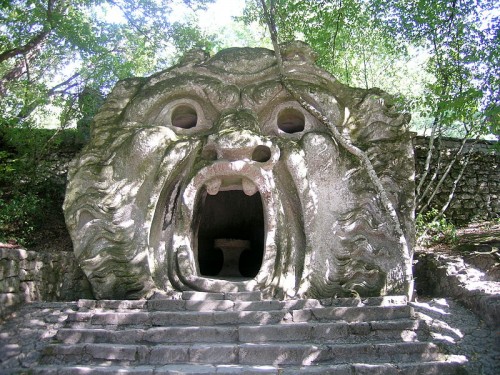
The sculpture garden, “the estate of the sensual,” is a monument of excess, and the demonic face that graces the cover of this book is as comically grotesque as any of Iron Maiden’s album covers. The opening of the mouth serves as a meeting place of two worlds. Just as death is the edge of life, the brink of the abyss is the edge of the visible.
August 26th, 2013 / 11:05 am
25 Points: All the Garbage of the World Unite!
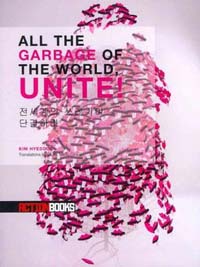 All the Garbage of the World Unite!
All the Garbage of the World Unite!
by Kim Hyesoon
translated by Don Mee Choi
Action Books, 2010
156 pages / $16 Buy from Actions Books, SPD, or Amazon
1. To be clear, this book, and all of Kim Hyesoon’s books, are tainted by my mother’s death.
2. This of course is not the fault of the author. Simply, I first discovered Kim Hyesoon when Action Books published Mommy Must Be A Mountain of Feathers. I was excited by the images of rats, of devouring, crushed bodies, the somehow endearing repulsion. And I was excited to share these poems with my mother. I bought as many of her books in the original Korean as I could order online, and my mother and I were going to read them in Korean together. We hadn’t read together since I was very young so this was a very special prospect for me.
3. My mother passed away suddenly before we were able to read together.
4. I still have the books, but my Korean isn’t good enough to get through them myself. When I can, I like to look at the poems side-by-side, but mostly, they just sit on my shelf.
5. In an interview, Kim Hyesoon says: “Mothers live somewhere after giving birth to us. Our mothers who have gone are buried in our bodies. It can be said that we were born with dead mothers in our body.” This deeply resonates with me.
6. Still, I couldn’t resist when Action Books put out a second collection of her poems in English.
7. In these poems, everything is both filthy and holy, repulsive and affectionate, present and disconnected.
8. As the text often describes a disconnect between heart and head and body, while reading, the visceral reactions I had seemed to separate my own self into multiple feeling selves, each reaching out over gaps looking for fingertips to grab a hold of, connected by this commonality of loss and distance, yet constantly searching, observing, and unsatiated.
9. In the preface, Kim Hyesoon writes, “I am many inside poetry. ‘I’ as a subject, the cognizant ‘I’ is deconstructed. I have never once lived as a single ‘I’ inside poetry. The confusion of the multiple ‘I’ is what makes me write poetry.”
10. The poem “Lady Phantom,” begins with “There is a corpse in the room / I killed someone,” and then later, “Maybe no one here has left a corpse behind / Everyone’s boisterous as if they have no bodies to hide.” Though there is a penetrance of being singular in this kind of guilt, of course we all have killed. At least I have. I choose to forget, but there are the many bodies stacked up in my closet. Will you find them? READ MORE >
November 14th, 2012 / 9:09 am
3 New from Action Books: Burning City, Cronk, Hyesoon
If you don’t own every title Action Books puts out, I’d say you’re slipping. Here are three new just released units for that library of teeth:
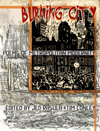
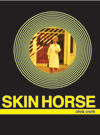
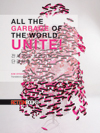
Burning City: Poems of Metropolitan Modernity ed. by Jed Rasula & Tim Conley [like 400 pp full of insane shit discoveries]
Skin Horse by Olivia Cronk [I’ve already read this twice, it’s wow]
All the Garbage of the World, Unite! by Kim Hyesoon, translated by Don Mee Choi [Which after Hyesoon’s first book, Mommy Must Be A Mountain of Feathers, also from Action, I’m ready to be killed again]
Helsinki
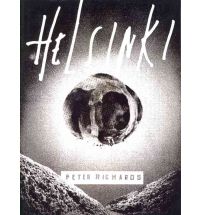 Helsinki
Helsinki
by Peter Richards
Action Books, 2011
90 pages / $16.00 Buy from Action Books
Rating: 8.0
The interlocking poems of Peter Richard’s Helsinki pleasure the reader by taking a deviated, scenic route, rather than getting straight to the point. Disregarding individual poem titles and punctuation (except for apostrophes), the poems become a labyrinth — ritually switching subject matters, physical settings and places in time. There’s even an element of multiplicity with the speaker, undertaking different roles across the terrain of the book: a lover, a solider, etc:
“We each appear indelible visible / precisely as ourselves but in the way / letters in a name might come oddly assorted I never fully wore the skin / of my name as when seeing my name / pass in that way forever staring down …”
With reckless line breaks, unyielding sentences, and a lack of punctuation to serve as a guide for how to read and when to stop and take a breath, there are moments in Helsinki where the poems can be difficult, seemingly almost inaccessible. This isn’t an easy book; this shouldn’t deter readers, though. Richards is a talented writer: with an affinity for gnarly diction, he is able to aptly and swiftly go from one off-the-wall surreal scene to another within a few lines in a poem:
“My tube was never removed so this painting depicts / the continuation of sound passing through one boundary / wall to the next on and out into space where I still have / a more or less decent view of the villa though it looks small”
Memory and recollection are thematically crucial as well. The speaker (or perhaps speakers?) is unsure where to the draw line differentiating between a past memory, a dream, and something this present sense of the world: “When I came to it was a place impossible / to distinguish from the place in my sleep.” And perhaps that’s the most attractive element of the book: being thrown into an unstable literary landscape that undergoes constant metamorphosis. Helsinki is dynamic. It’s an “endless architecture,” one that spirals and swirls into many places, trying to accomplish a difficult task for itself:
“woe to be counted when a mountain with so many / unburdens itself hearing cries from the buried ones / failing inside a mouth clogged with it recalls my own / failure to ever capture in words the whitened season”
August 17th, 2011 / 12:06 pm
Hank by Abraham Smith
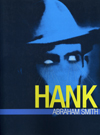
Most everyone I’ve talked to about this book or about Abraham Smith in general, his reading performances or his writing, his ideas, his sense of verbal compulsion and montage of syllable, his voice, has pretty much come to agree on one point: “I have no goddamn idea where this guy came from.” His first book Whim Man Mammon, also from Action, was one I read I think in a small room and somewhat in my backyard, thinking somehow someone had learned to talk to a machine, but like a machine that used to sit in the back room of a shaving place where men came to bark secrets at other men while getting the hair done off their face. An image from one of the poems in that first of a man throwing a chair at a sweet gum tree remains one of those tranplanted sights that is just now a full part of my own head.
Earlier this year then I saw Abe read from the same poems in a larger room, channeling some kind of cross between his own admitted sound of hearing preachers through transistors growing up in Kentucky, and some kind of tangled man caught in a draft vent. Everyone I went to that reading with still talks about jesus christ that guy is something. I had to reread that first book again after that and understood it not as a machine but as someone maybe talking to the ground that used to be underneath our feet and the sky that used to have a different kind of color too, and with a shitton maybe of whiskey and old music that sits in the soles of people’s feet. [Here’s a downloadable video of Abe reading from both books.] Here’s another:
This new second book, Hank, after Hank Williams, goes even further than that first one in just inventing and channeling this who the what where how did you say mode. These poems are longer and all titled not in english but in expletive deletion symbols, probably like the weird kind of coils that seem to come up when you hear someone talk like this. I can’t even pick excerpts from these ongoings because it feels like taking the finger off a hand.
October 10th, 2010 / 12:29 pm
Massive People (13): Johannes Göransson

If I had to make a list of modern forces for the grossvoice, for the kind of language and propagation of a series of imagery and discussion that is continually underfunded or otherwise ignored, Johannes Göransson would being among those crowning the list. An editor and founder of the vital Action Books, as well as its web component Action Yes (both one of my favorite presses and online journals, publishing big voices such as Lara Glenum, Aase Berg, and a high # of books in translation), Johannes is also the author, so far, of three books of new mind and language: Pilot (Fairy Tale Review Press), A New Quarantine Will Take My Place (Apostrophe Books), and Dear Ra (Starcherone Press). This year Black Ocean released his translation of major Swedish poet Aase Berg, With Deer, one of many works in translation Göransson has put together.
Recently I sent a couple of questions Johannes’s way, and he responded in force, as might be expected, about the history of Action, the grotesque, Genet, and !!!!

